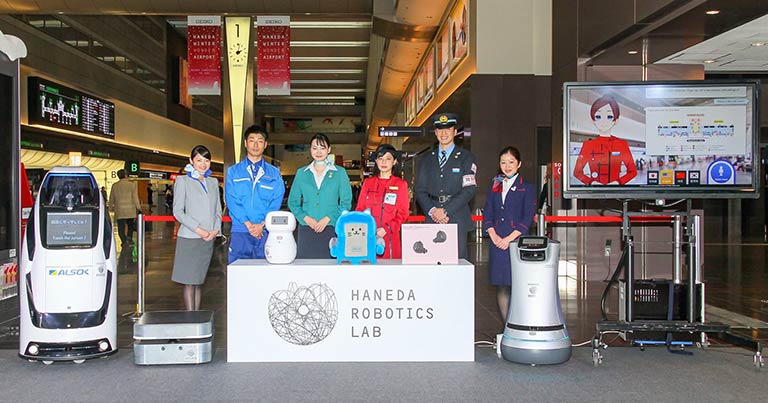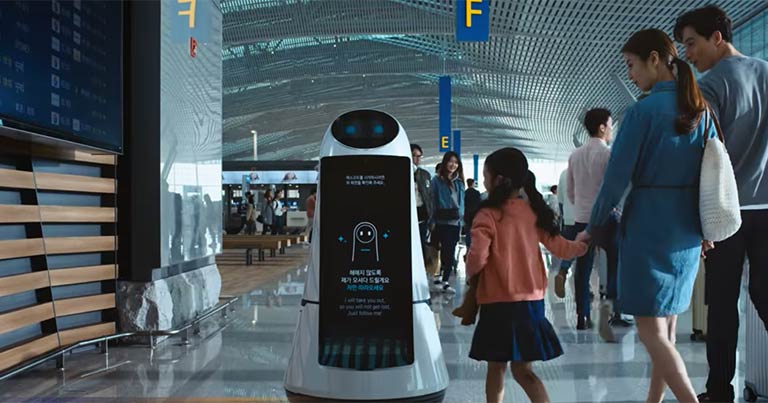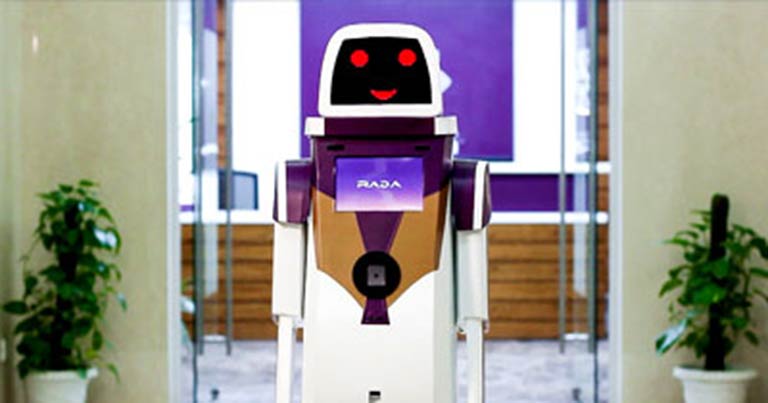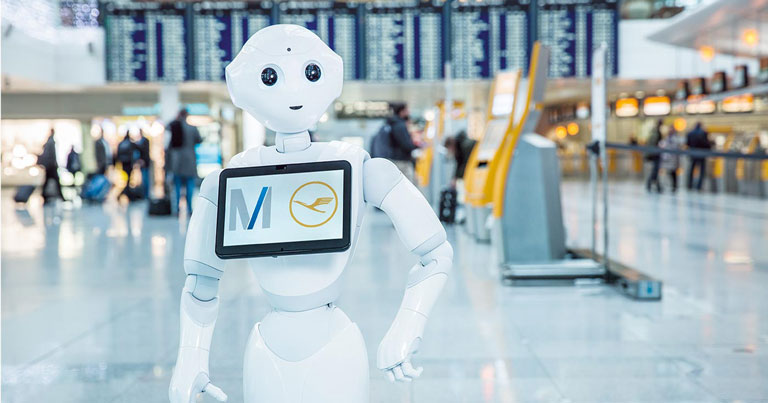Once seen as a thing of the future, customer service robots are now becoming a more common sight in airport terminals. From Tokyo to Seoul to Delhi, robots are now appearing in major international airports as the most forward-thinking industry players explore how they can help them improve the passenger experience and optimise efficiency.
Haneda Robotics Lab trialling seven robots

Japan Airport Terminal Co., Ltd, the operator of the passenger terminals at Tokyo’s Haneda Airport (HND), has been operating Haneda Robotics Lab since 2016 to provide opportunities for robot developers to undertake user testing and encourage passengers to build familiarity with robots in the airport environment. The Lab was created as part of the Japanese government’s “Reform 2020” projects, in cooperation with the Ministry of Land, Infrastructure, Transport and Tourism as well as the Ministry of Economy, Trade, and Industry.
In late 2017, as part of its second annual initiative, Haneda Robotics Lab advertised for robot technology specialising in three fields: security, logistics/transportation and translation. Seven robots were selected for trials at HND. Among them is Reborg-X, an autonomously patrolling/guiding robot, and Relay, an autonomous delivery robot that can transport products and goods from one location to another.
Japan Airport Terminal Co., Ltd, has stated that it hopes this project can encourage a variety of manufacturers and research institutions to gain verification of robotics technology in a live environment as well as promote the development of more efficient robots.
Visitors to the free-to-attend FTE Asia EXPO 2018 (13-14 November, Singapore) will be able to experience the robots first-hand on the Haneda Robotics Lab booth in the exhibition hall. You can register for your free pass here.
“Airstar” robot at Incheon Airport

At Incheon Airport in Seoul, passengers have also been growing more accustomed to seeing robots roaming around. This year, the “Airstar” robot, developed by LG, has helped passengers find their way around the airport, including the new Terminal 2, by providing directions on its screen as well as guiding them to the relevant check-in counter. Passengers simply need to provide their flight number and the Airstar robot can direct them to where they need to be.
The multi-lingual robot, which is powered by advanced artificial intelligence (AI) and voice recognition technology, can also provide passengers with other useful airport information and directions to various points of interest.
Vistara’s “RADA” robot

In May 2018, Vistara unveiled “RADA”, the first passenger-facing robot to appear in an Indian Airport. RADA made its debut in Vistara’s Signature Lounge at Delhi Airport’s Terminal 3.
The robot can provide information on the terminal facilities, departure gates, destination weather conditions, real-time flight status, and information about the airline’s own products and services. It greets customers and interacts with them using basic hand movements, and is capable of moving around in the lounge on predefined pathways. Additionally, it can help to keep young travellers entertained by playing games and other multimedia content such as songs and videos.
RADA was conceived, designed and engineered by Vistara’s team of technology experts and apprentices from Tata Innovation Lab with support from students of reputed institutions.
Vistara’s Chief Information and Innovation Officer, Ravinder Pal Singh, who will deliver a Day 2 keynote address in the Premium Conference at FTE Asia EXPO 2018 (13-14 November, Singapore), explained: “We thought of inventing a robot that can help us enhance customer experience by gradually taking over the routine, mundane tasks. The basic premise of the thought was to develop a simple and extremely cost-effective practical robot that can engage in basic human interaction to begin with, and can further be developed to perform more complex tasks, as consumer habits continue to evolve in the technological age where humans and machines will complement and create an evolved harmonious evolution.”
MUC and Lufthansa explore the potential of “Josie Pepper”

While a selection of airports and airlines in Asia are playing a crucial role in the development of robotics and encouraging their acceptance in the airport environment, others outside of the continent are playing an important part, too. For instance, Munich Airport and Lufthansa have been working together to trial a humanoid robot, developed by SoftBank Robotics.
In Terminal 2 at Munich Airport, “Josie Pepper” has been directing passengers to their gate and answering questions about restaurants and shops. The robot uses IBM Watson Internet of Things (IoT) cloud-based artificial intelligence technologies. Moreover, the robot’s core contains a high-performance processor with WLAN internet access, which creates a connection to a cloud service where speech is processed, interpreted and linked to the airport data.
The robot does not just deliver predefined texts, but is also able to answer each question individually. With its ability to learn, the system will get better at combining questions with the relevant information to provide more precise replies.
In the Premium Conference at FTE Asia EXPO 2018, Julia Schmidt, Innovation Management and Digitization, Terminal 2 Company Munich Airport, will share insights and lessons learned from this project in a session entitled “Tapping into the potential offered by artificial intelligence and robotics throughout the passenger journey”. You can register to attend here.







